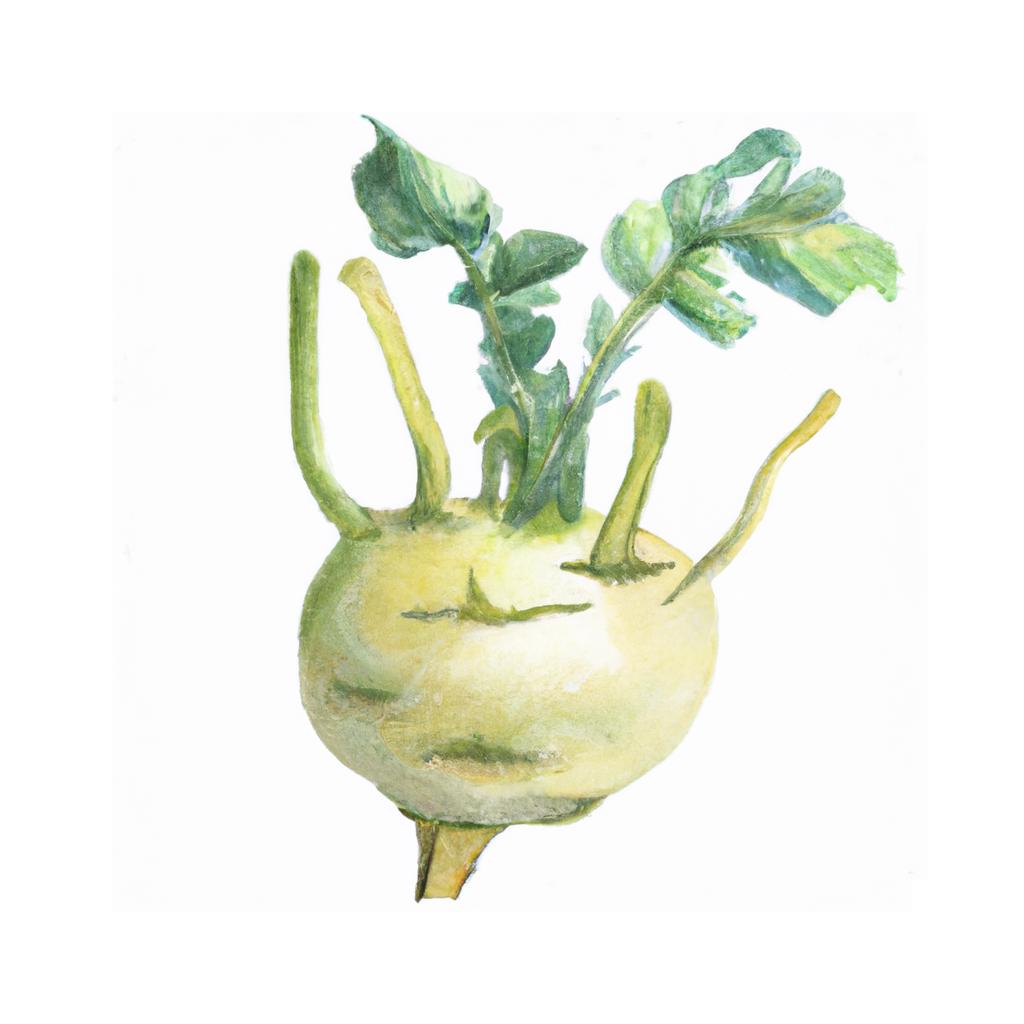
Kohlrabi, also known as German turnip, is a biennial vegetable belonging to the Brassica oleracea family, which includes other notable vegetables such as cabbage, broccoli, and Brussels sprouts. This versatile vegetable has a mild, sweet flavor with a crisp texture somewhat resembling a combination of apples, turnips, and radishes. Kohlrabi can be harvested in the cool seasons of spring and fall and is available in two colors: pale green and purple.
Interestingly, the name 'kohlrabi' is derived from the German words 'kohl,' meaning cabbage, and 'rübe,' meaning turnip. It is believed to have originated in Europe around the 14th or 15th century, although some sources claim it might have originated in the Mediterranean region. Over time, kohlrabi has become popular in various cuisines around the world, including Indian, German, and Middle Eastern dishes.
Kohlrabi is highly nutritious and contains an impressive range of vitamins and minerals, including vitamin C, potassium, and dietary fiber. It is also low in calories and carbohydrates, making it an excellent choice for those aiming for a healthy and balanced diet.
In culinary uses, kohlrabi is quite adaptable and can be eaten raw or cooked. When eaten raw, it can be sliced and added to salads or served with dips as a crunchy snack. Kohlrabi is also delicious when roasted, stir-fried, or steamed. Its leaves can be used similarly to collard greens or kale. Some popular dishes that feature kohlrabi include slaws, soups, and gratins. The vegetable pairs well with complementary flavors such as dill, tarragon, lemon, and mustard.
This is advice is most applicable to growers in the UK, you may need to adjust the timings if you live somewhere with a different climate and/or seasons.
| Month | Tasks | Advice |
|---|---|---|
| January | - | - |
| February | Start seeds indoors, | Sow kohlrabi seeds in seed trays or pots 4-6 weeks before the last frost is expected. |
| March | Harden off seedlings, Transplant outdoors, | Once seedlings have 2-3 true leaves and weather conditions are favourable, transplant hardened-off seedlings outdoors, spacing them 15-30 cm apart. |
| April | Sow seeds directly outdoors, Thin seedlings, | Direct sow seeds in the garden and thin seedlings to 15-30 cm spacing when they have a couple of true leaves. |
| May | Water regularly, Mulch, | Keep the soil consistently moist, and use mulch to retain moisture and suppress weeds. |
| June | Harvest early spring plantings, | For best flavour and texture, harvest kohlrabi when bulbs are 5-7 cm in diameter. |
| July | Sow seeds for fall harvest, | Sow kohlrabi seeds directly into the garden for a fall harvest. |
| August | Water regularly, Mulch, | Keep the soil consistently moist, and use mulch to retain moisture and suppress weeds. |
| September | Harvest late summer plantings, | For best flavour and texture, harvest kohlrabi when bulbs are 5-7 cm in diameter. |
| October | Harvest fall plantings, | For best flavour and texture, harvest kohlrabi when bulbs are 5-7 cm in diameter. |
| November | - | - |
| December | - | - |